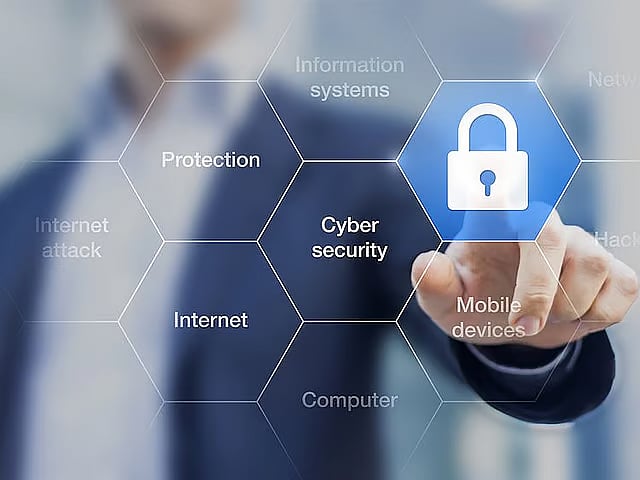Techie Tonic: Why companies are merging CISO and CSO roles
A CEO’s collective thought to reduce operational cost, risk and improve performance

An interesting topic discussed among cybersecurity leaders from around the world in CISO360, Pulse conference “The convergence of the Chief Information Security Officer (CISO) and Chief Security Officer (CSO) roles into a unified security function” is an emerging trend driven by the increasing complexity of modern threats, which often blend physical, digital, and human dimensions. This unified front provides a more strategic, holistic, and efficient approach to enterprise risk management.
In an era where cyber and physical threats increasingly overlap, organizations are rethinking how they manage security at the highest levels. The once distinct roles of CISO and CSO are beginning to merge, forming a unified leadership model designed to tackle the complex, interconnected risks of today’s digital enterprise. This convergence marks a significant evolution in corporate governance and risk management, signalling a shift toward holistic resilience rather than isolated protection.
Traditionally, the CSO’s domain was physical security, safeguarding people, property, and facilities, while the CISO focused on information systems, data integrity, and cybersecurity. For years, the two functions operated separately, with different teams, budgets, and reporting structures. But as digital transformation accelerated, this separation became increasingly impractical. Modern organizations depend on technologies that blur the line between physical and digital operations, cloud computing, Internet of Things (IoT) sensors, industrial automation, and AI-driven logistics. A cyberattack can disable a factory floor, while a physical breach can compromise digital infrastructure. The realization that both spheres are intertwined has made integrated security leadership not just logical, but essential.
Would it drive improved efficiency and over all cost reduction?
The convergence of CISO and CSO roles is driven by several trends. Foremost among them is the growing sophistication of threats. Attackers are no longer confined to one domain, they exploit vulnerabilities across both physical and cyber environments to maximize disruption. For example, a coordinated campaign might involve tampering with access control systems while simultaneously deploying ransomware on internal networks. This interconnected threat landscape requires unified oversight and faster decision-making, something that siloed departments struggle to achieve.
Digital transformation is another key factor. As organizations expand into hybrid and cloud-based environments, the concept of a defined network perimeter has all but vanished. Security leadership must therefore extend beyond traditional boundaries to protect data, assets, and people wherever they reside. Regulatory compliance has also become more complex, requiring consistent governance across physical and digital systems. A converged leadership model helps ensure alignment with global standards for privacy, resilience, and risk management.
By merging responsibilities, companies are building comprehensive “enterprise security” functions that integrate cyber defense, physical security, crisis management, and business continuity under one umbrella. Some organizations have even introduced new titles, such as Chief Security and Resilience Officer or Chief Trust Officer, to reflect this broader mandate. The benefits of this approach are clear, which are unified strategy, improved coordination during incidents, and more efficient use of resources. A single chain of command allows faster communication, reduces redundancy, and creates a clearer line of accountability when responding to security events.
However, achieving convergence is not without challenges. The skill sets required for physical and cyber security leadership differ considerably. Physical security leaders often come from law enforcement or corporate protection backgrounds, while CISOs typically rise through technical or information governance roles. Bridging these disciplines demands leaders with both strategic acumen and multidisciplinary expertise. Organizational culture can also present obstacles, departments accustomed to operating independently may resist structural changes or budget realignment.
Experts agree that success depends on three core principles, namely collaboration, integration, and alignment. Collaboration ensures that teams share intelligence and jointly manage incidents. Integration involves deploying unified security operations centres and leveraging analytics platforms that correlate physical and digital threat data. Alignment means embedding security leadership within the broader business strategy, ensuring that decisions are made with both risk and opportunity in mind, and that the security function reports directly to executive leadership or the board.
Ultimately, the convergence of the CISO and CSO roles is more than an administrative reshuffle; it represents a strategic evolution in how organizations view security itself. Rather than treating it as a reactive or compartmentalized function, convergence fosters a culture of resilience, trust, and continuous improvement. In a landscape defined by complex threats, from ransomware and supply chain attacks to insider risks and AI-driven intrusions, unified leadership is the next logical step.
To conclude
As technology continues to dissolve the boundary between the digital and physical worlds, the organizations that thrive will be those that integrate their defenses under one vision, one leader, and one strategy. The convergence of CISO and CSO roles is not merely a trend, but it is the blueprint for secure, resilient enterprises in the modern age.
Sign up for the Daily Briefing
Get the latest news and updates straight to your inbox
Network Links
GN StoreDownload our app
© Al Nisr Publishing LLC 2025. All rights reserved.
